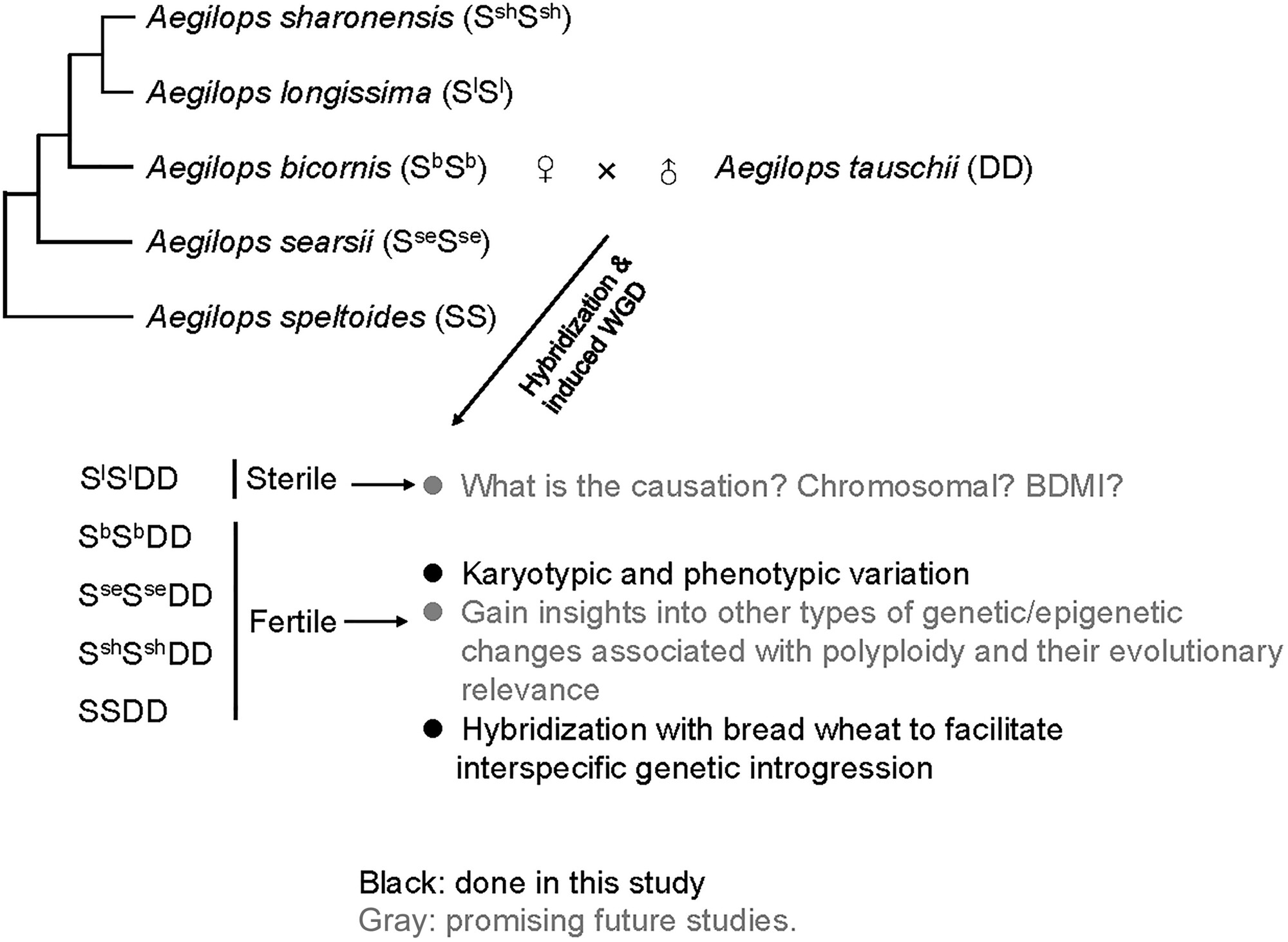Construction of five sets of synthetic allotetraploids of diploid Aegilops species, and phenotypic consequences of allopolyploidy and additional chromosomal variation
- 1Key Laboratory of Molecular Epigenetics of Ministry of Education (MOE), Northeast Normal University, Changchun 130024, China
2School of Bioengineering, Dalian University of Technology, Dalian 116024, China
†These authors contributed equally to this work.
*Authors for correspondence. Bao Liu. E‐mail: baoliu@nenu.edu.cn; Ruili Lv. E‐mail: lvrl@dlut.edu.cn
Received date: 2025-03-08
Accepted date: 2025-04-27
Online published: 2025-05-10
Supported by
This research was funded by the National Natural Science Foundation of China (grant #31991211 to BL) and the China Postdoctoral Science Foundation (grant #2024M760322 to RLL).
Abstract

Key words: allopolyploidy; introgression; karyotypic variation; phenotypic effects; wheat.
Cite this article
Deshi Zhang, Han Wang, Tingting Yu, Tianying Zhang, Boshi Chen, Bao Liu, Ruili Lv . Construction of five sets of synthetic allotetraploids of diploid Aegilops species, and phenotypic consequences of allopolyploidy and additional chromosomal variation[J]. Journal of Systematics and Evolution, 0 : 1 . DOI: 10.1111/jse.13191